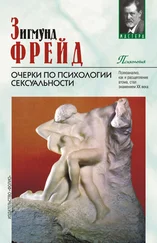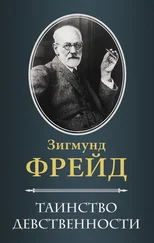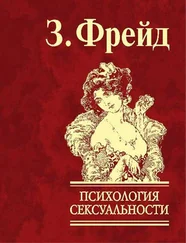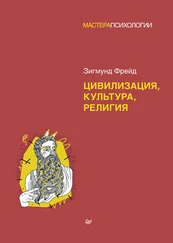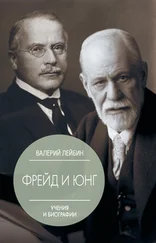Зигмунд Фрейд - Totem and Taboo
Здесь есть возможность читать онлайн «Зигмунд Фрейд - Totem and Taboo» весь текст электронной книги совершенно бесплатно (целиком полную версию без сокращений). В некоторых случаях можно слушать аудио, скачать через торрент в формате fb2 и присутствует краткое содержание. Год выпуска: 2014, Издательство: epubBooks Classics, Жанр: Психология, на английском языке. Описание произведения, (предисловие) а так же отзывы посетителей доступны на портале библиотеки ЛибКат.
- Название:Totem and Taboo
- Автор:
- Издательство:epubBooks Classics
- Жанр:
- Год:2014
- ISBN:нет данных
- Рейтинг книги:3 / 5. Голосов: 1
-
Избранное:Добавить в избранное
- Отзывы:
-
Ваша оценка:
- 60
- 1
- 2
- 3
- 4
- 5
Totem and Taboo: краткое содержание, описание и аннотация
Предлагаем к чтению аннотацию, описание, краткое содержание или предисловие (зависит от того, что написал сам автор книги «Totem and Taboo»). Если вы не нашли необходимую информацию о книге — напишите в комментариях, мы постараемся отыскать её.
Totem and Taboo — читать онлайн бесплатно полную книгу (весь текст) целиком
Ниже представлен текст книги, разбитый по страницам. Система сохранения места последней прочитанной страницы, позволяет с удобством читать онлайн бесплатно книгу «Totem and Taboo», без необходимости каждый раз заново искать на чём Вы остановились. Поставьте закладку, и сможете в любой момент перейти на страницу, на которой закончили чтение.
Интервал:
Закладка:
I take great pleasure in acknowledging my indebtedness to Mr Alfred B. Kuttner for the invaluable assistance he rendered in the translation of this work.
A. A. BRILL.
Chapter I
The Savage’s Dread of Incest
Primitive man is known to us by the stages of development through which he has passed: that is, through the inanimate monuments and implements which he has left behind for us, through our knowledge of his art, his religion and his attitude towards life, which we have received either directly or through the medium of legends, myths and fairy tales; and through the remnants of his ways of thinking that survive in our own manners and customs. Moreover, in a certain sense he is still our contemporary: there are people whom we still consider more closely related to primitive man than to ourselves, in whom we therefore recognize the direct descendants and representatives of earlier man. We can thus judge the so–called savage and semi–savage races; their psychic life assumes a peculiar interest for us, for we can recognize in their psychic life a well–preserved, early stage of our own development.
If this assumption is correct, a comparison of the ‘Psychology of Primitive Races’ as taught by folklore, with the psychology of the neurotic as it has become known through psychoanalysis will reveal numerous points of correspondence and throw new light on subjects that are more or less familiar to us.
For outer as well as for inner reasons, I am choosing for this comparison those tribes which have been described by ethnographists as being most backward and wretched: the aborigines of the youngest continent, namely Australia, whose fauna has also preserved for us so much that is archaic and no longer to be found elsewhere.
The aborigines of Australia are looked upon as a peculiar race which shows neither physical nor linguistic relationship with its nearest neighbours, the Melanesian, Polynesian and Malayan races. They do not build houses or permanent huts; they do not cultivate the soil or keep any domestic animals except dogs; and they do not even know the art of pottery. They live exclusively on the flesh of all sorts of animals which they kill in the chase, and on the roots which they dig. Kings or chieftains are unknown among them, and all communal affairs are decided by the elders in assembly. It is quite doubtful whether they evince any traces of religion in the form of worship of higher beings. The tribes living in the interior who have to contend with the greatest vicissitudes of life owing to a scarcity of water, seem in every way more primitive than those who live near the coast.
We surely would not expect that these poor naked cannibals should be moral in their sex life according to our ideas, or that they should have imposed a high degree of restriction upon their sexual impulses. And yet we learn that they have considered it their duty to exercise the most searching care and the most painful rigour in guarding against incestuous sexual relations. In fact their whole social organization seems to serve this object or to have been brought into relation with its attainment.
Among the Australians the system of Totemism takes the place of all religious and social institutions. Australian tribes are divided into smaller septs or clans, each taking the name of its totem . Now what is a totem? As a rule it is an animal, either edible and harmless, or dangerous and feared; more rarely the totem is a plant or a force of nature (rain, water), which stands in a peculiar relation to the whole clan. The totem is first of all the tribal ancestor of the clan, as well as its tutelary spirit and protector; it sends oracles and, though otherwise dangerous, the totem knows and spares its children. The members of a totem are therefore under a sacred obligation not to kill (destroy) their totem, to abstain from eating its meat or from any other enjoyment of it. Any violation of these prohibitions is automatically punished. The character of a totem is inherent not only in a single animal or a single being but in all the members of the species. From time to time festivals are held at which the members of a totem represent or imitate, in ceremonial dances, the movements and characteristics of their totems.
The totem is hereditary either through the maternal or the paternal line; (maternal transmission probably always preceded and was only later supplanted by the paternal). The attachment to a totem is the foundation of all the social obligations of an Australian: it extends on the one hand beyond the tribal relationship, and on the other hand it supersedes consanguineous relationship [9] Frazer, Totemism and Exogamy , Vol. I, p. 53. “The totem bond is stronger than the bond of blood or family in the modern sense.”
.
The totem is not limited to district or to locality; the members of a totem may live separated from one another and on friendly terms with adherents of other totems [10] This very brief extract of the totemic system cannot be left without some elucidation and without discussing its limitations. The name Totem or Totam was first learned from the North American Indians by the Englishman, J. Long, in 1791. The subject has gradually acquired great scientific interest and has called forth a copious literature. I refer especially to Totemism and Exogamy by J. G. Frazer, 4 vols., 1910, and the books and articles of Andrew Lang ( The Secret of Totem , 1905). The credit for having recognized the significance of totemism for the ancient history of man belongs to the Scotchman, J. Ferguson MacLennan ( Fortnightly Review , 1869–70). Exterior to Australia, totemic institutions were found and are still observed among North American Indians, as well as among the races of the Polynesian Islands group, in East India, and in a large part of Africa. Many traces and survivals otherwise hard to interpret lead to the conclusion that totemism also once existed among the aboriginal Aryan and Semitic races of Europe, so that many investigators are inclined to recognize in totemism a necessary phase of human development through which every race has passed.
.
And now, finally, we must consider that peculiarity of the totemic system which attracts the interest of the psychoanalyst. Almost everywhere the totem prevails there also exists the law that the members of the same totem are not allowed to enter into sexual relations with each other; that is, that they cannot marry each other . This represents the exogamy which is associated with the totem.
This sternly maintained prohibition is very remarkable. There is nothing to account for it in anything that we have hitherto learned from the conception of the totem or from any of its attributes; that is, we do not understand how it happened to enter the system of totemism. We are therefore not astonished if some investigators simply assume that at first exogamy—both as to its origin and to its meaning—had nothing to do with totemism, but that it was added to it at some time without any deeper association, when marriage restrictions proved necessary. However that may be, the association of totemism and exogamy exists, and proves to be very strong.
Let us elucidate the meaning of this prohibition through further discussion.
( a ) The violation of the prohibition is not left to what is, so to speak, an automatic punishment, as is the case with other violations of the prohibitions of the totem (e.g., not to kill the totem animal), but is most energetically avenged by the whole tribe as if it were a question of warding off a danger that threatens the community as a whole or a guilt that weighs upon all. A few sentences from Frazer’s book [11] Frazer, l.c. , p. 54.
will show how seriously such trespasses are treated by these savages who, according to our standard are otherwise very immoral.
Интервал:
Закладка:
Похожие книги на «Totem and Taboo»
Представляем Вашему вниманию похожие книги на «Totem and Taboo» списком для выбора. Мы отобрали схожую по названию и смыслу литературу в надежде предоставить читателям больше вариантов отыскать новые, интересные, ещё непрочитанные произведения.
Обсуждение, отзывы о книге «Totem and Taboo» и просто собственные мнения читателей. Оставьте ваши комментарии, напишите, что Вы думаете о произведении, его смысле или главных героях. Укажите что конкретно понравилось, а что нет, и почему Вы так считаете.


